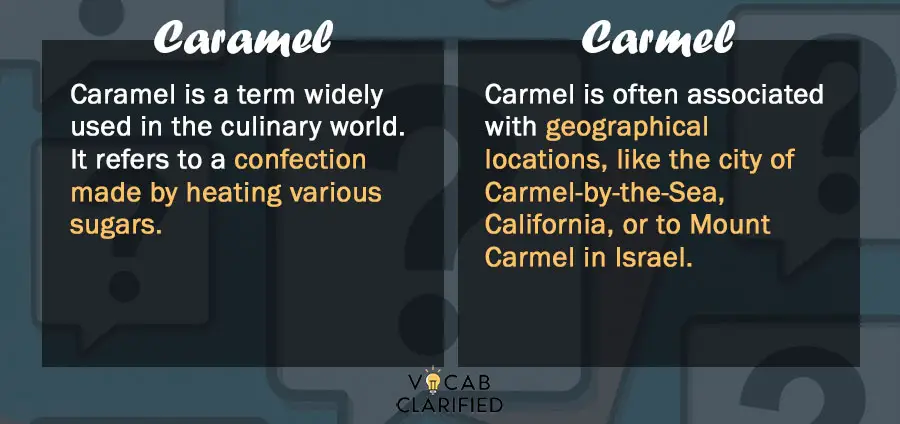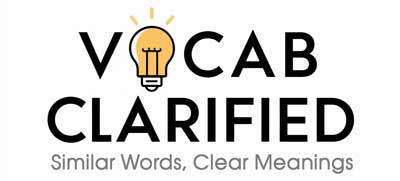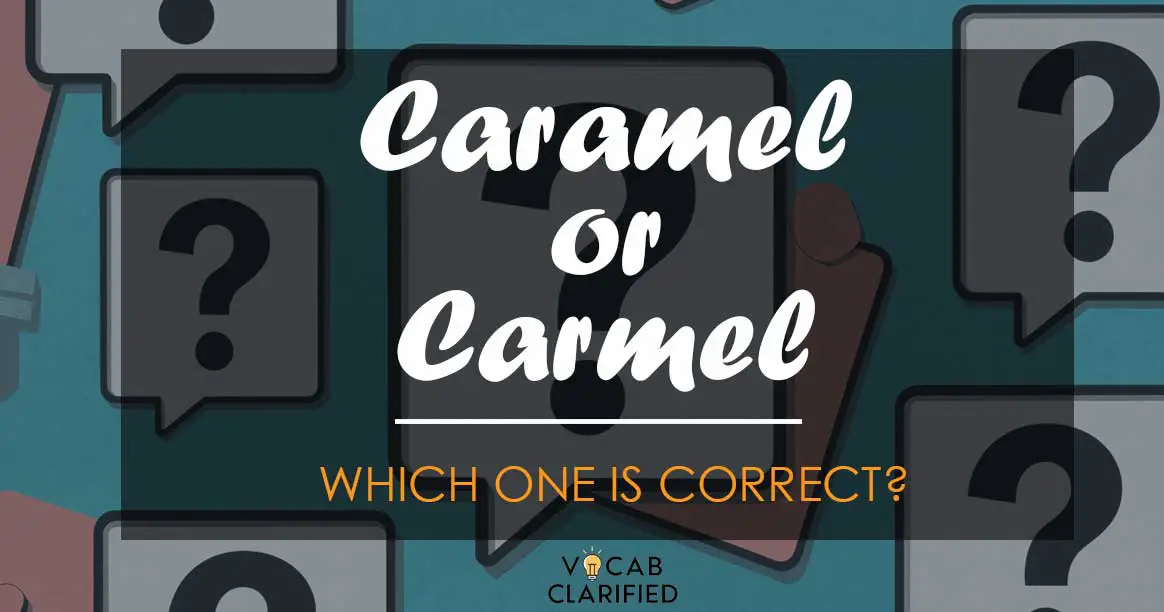Have you ever found yourself writing down a shopping list or discussing dessert recipes and stumbled over the words “caramel” and “carmel”?
Maybe you have been corrected after mispronouncing one as the other, or maybe you have seen both used interchangeably online and wondered, “Isn’t one of them a place?”
If this rings a bell, you are not alone. This article will explain the difference between “caramel” and “carmel,” guiding you to a clearer understanding and more confident usage of each term.
Understanding Caramel and Carmel
Caramel: Definition and Usage
Caramel is a term widely used in the culinary world. It refers to a confection made by heating various sugars. You can use it to add flavor to puddings and desserts, fill bonbons with it, or put it on top of ice cream and custard.
The word “caramel” also extends to describe the rich, golden-brown color of the cooked sugar. For example:
- A chef preparing a flan drizzles caramel sauce over the dessert for a glossy finish.
- The warm, caramel notes in the coffee offered a comforting, sweet aroma.
Carmel: Definition and Usage
Carmel, on the other hand, does not relate to food. It is often associated with geographical locations, notably the city of Carmel-by-the-Sea, California, a picturesque and artsy coastal town known for its stunning scenery, historical significance, and celebrity residents.
“Carmel” can also refer to Mount Carmel in Israel, which holds religious and historical importance.
Side-by-Side Comparison
| Aspect | Caramel | Carmel |
| Definition | A sweet, sticky confection or color. | A place name, often associated with towns or geographical landmarks. |
| Common Usage | “She drizzled caramel over the cake.” | “They vacationed in Carmel last summer.” |
| Key Differences | Refers to food or color. | Refers to specific locations. |

When deciding between “caramel” and “carmel,” consider the context. If you are talking about sweets, desserts, or colors, “caramel” is the term you are after.
However, if you are referring to a location or planning a visit to such a place, “carmel” is the correct choice.
Remember, the best choice often depends on the context of your conversation or writing.
Everyday Usage Examples
For Caramel:
- After dinner, they enjoyed homemade vanilla ice cream topped with a rich, silky caramel sauce.
- The decorator chose a caramel color for the living room walls to create a warm and inviting space.
For Carmel:
- Their wedding photos were taken against the breathtaking backdrop of Carmel’s coastline.
- On their trip to Israel, they explored the historic sites around Mount Carmel.
Conclusion
Now that you have seen “caramel” and “carmel” in action, the confusion should be gone.
Refer to this guide for clarity, and before you know it, deciding between “caramel” and “carmel” will feel like instinct, whether you are talking about your upcoming dessert masterpiece or your travel itinerary.

